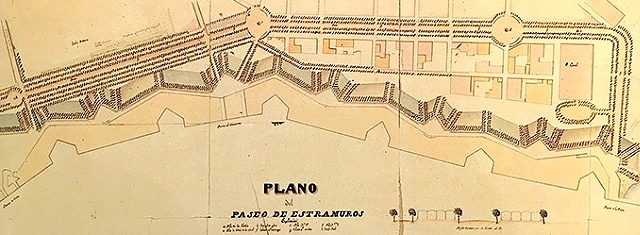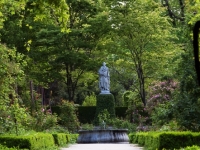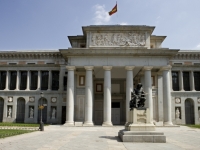Travel
UNESCO includes the Madrid Landscape of Light on the World Heritage list
Paseo del Prado and Retiro park

(Source: Madrid City Council)
USPA NEWS -
The Landscape of Light, an area that includes the Paseo del Prado and Madrid's Retiro Park, has been recognized by UNESCO as a World Heritage Site. It is the first Madrid property to be included in this list. Spain presented in 2019 to UNESCO the candidacy of the 'Paseo del Prado and Buen Retiro, Paisaje de las Artes y las Ciencias' to the World Heritage List, for being “an extraordinary urban cultural landscape where culture and nature have been united since mid-16th Century to the present day." In July 2021, the World Heritage Committee inscribed the Madrid candidacy on the World Heritage List.
The Madrid City Council, in collaboration with the regional government of Madrid and supported by the Ministry of Culture and Sports, promoted the candidacy of Madrid. The name of the inscribed property is 'El Paseo del Prado and Buen Retiro, Paisaje de las Artes y las Ciencias', but everyone knows it as the Landscape of Light. The inscription on the UNESCO list includes the surroundings of the Paseo del Prado and the Buen Retiro gardens, which have been included in the list as Cultural Landscape, a landscape shaped by man throughout history with a value exceptional, since it represents the first tree-lined walk within a European capital conceived for the people to enjoy in a natural environment in the city.
Later, at the time of the Illustration, it would become an urban landmark with the planning of the Paseo del Prado thanks to the transformation undertaken by King Carlos III, when scientific institutions such as the Cabinet of Natural History, the Royal Botanical Garden were built. and the Royal Astronomical Observatory, to open knowledge to all citizens. This planning also served as a model for other similar walks in Spain and throughout Latin America, such as the Alameda de México or the Paseo del Prado in Havana.
Since its appearance in the 16th century, the Prado-Retiro area has been the prototype of urban avenues throughout the Old Regime, designed to promote leisure and recreation for citizens in urban centers in a natural environment. This model, the first of its kind in European capitals and copied in Seville in the Alameda de Hércules, would spread throughout the peninsula and the American continent in the projects of external transformation of cities throughout the XVII, XVIII and XIX centuries. Thus arose the Alameda de México, that of the Descalzos in Lima, the Paseo del Prado in Havana, etc.
Green heart
The Landscape of Light constitutes the green heart of Madrid. Located in the heart of the city, it is the resource that most contributes to the sustainability of the capital. “It purifies the air, filters pollution, buffers the temperature and provides multiple ecological services to citizens. It is an important lung for the generation of oxygen and counteracts the adverse environmental effects of the heat island in the summer in its immediate surroundings,” explain sources from the Madrid City Council.In addition, from an aesthetic, historical and artistic point of view it contains an incredible variety of elements such as the Paseo del Prado itself, the Royal Botanical Garden, the Retiro Park with its different areas (the Rosaleda, the Parterre, the Campo Grande, the Reserved) and contemporary contributions such as the tropical garden of Atocha or the vertical garden of Caixa Forum. The number and extent of all these landscaped areas includes more than 20,000 trees and an incredible variety of species.
Since its transformation in the time of Carlos III, the Landscape of Light has constituted the backbone of Spanish science: the Cabinet of Natural History, today the Prado Museum, the Astronomical Observatory and the Royal Botanical Garden, the latter institutions that are still alive. in our days.
This process was interrupted by the War of Independence and during the reign of Fernando VII, science would slowly return to this space to remain permanently at the end of the 19th century and, above all, with the Silver Age of Spanish culture: scientific research, with the figure of Santiago Ramón y Cajal, and higher education, the School of Engineers and the Faculty of Medicine. All of them have left their mark on monumental sites, in some cases with the same uses for which they were created.
The Paseo del Prado and Buen Retiro space was transformed during the Enlightenment period, definitively linked to the Arts and Sciences, placing the research and science centers within the reach of the public and subsequently incorporating universal references of Culture, with milestones such as the Royal Academy, also headquarters of the Association of Academies of the Spanish Language, or the Archive of the Royal Botanical Garden that treasures documents and pictures of botanical expeditions to the New World such as those of Mutis, or a herbarium with more than a million dry plants.
Liability for this article lies with the author, who also holds the copyright. Editorial content from USPA may be quoted on other websites as long as the quote comprises no more than 5% of the entire text, is marked as such and the source is named (via hyperlink).







